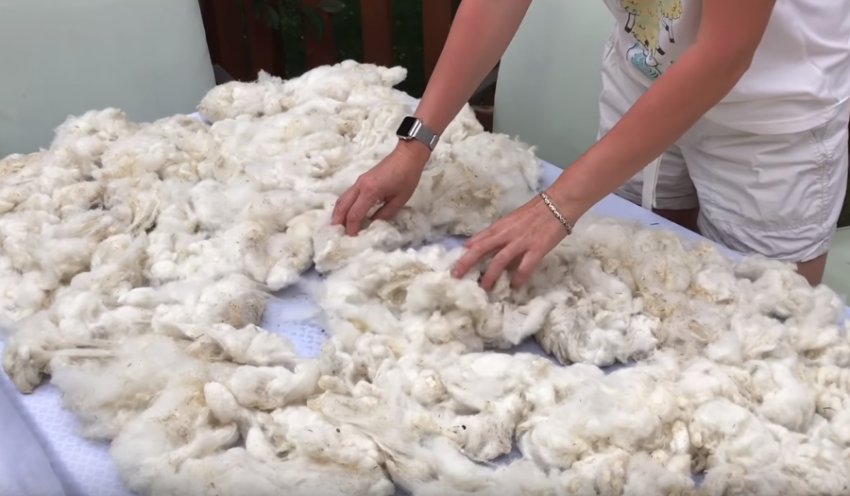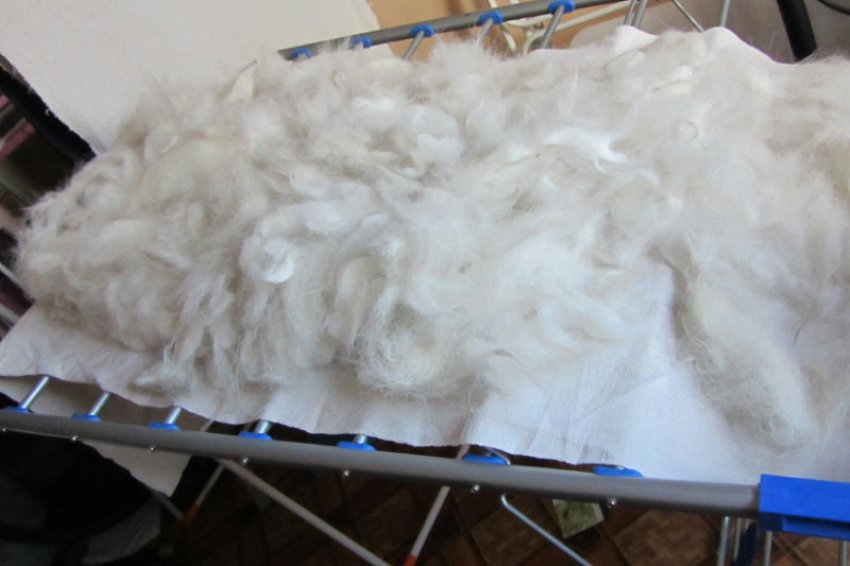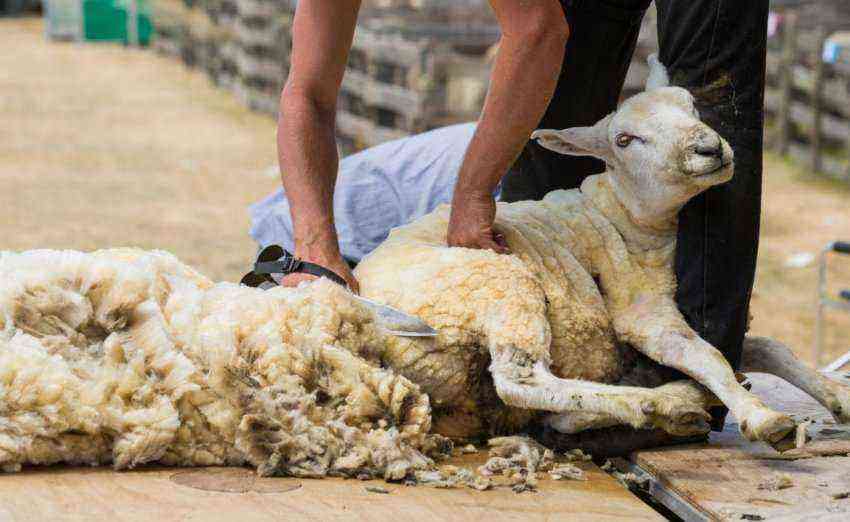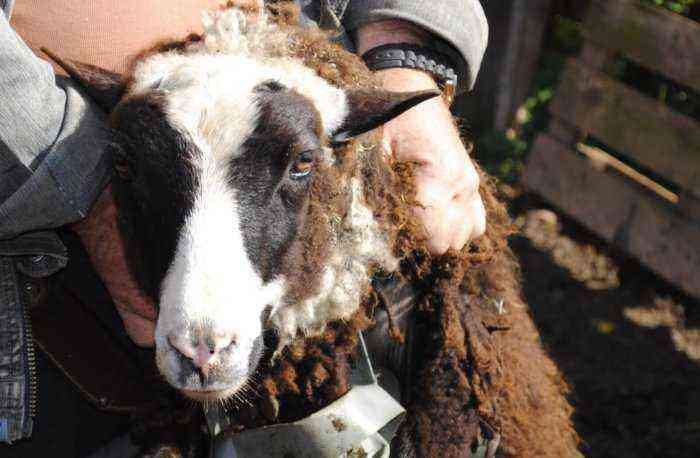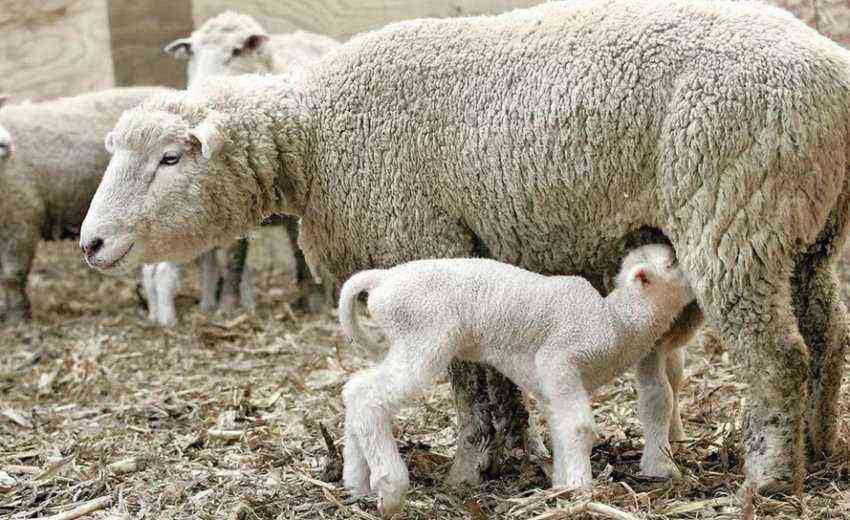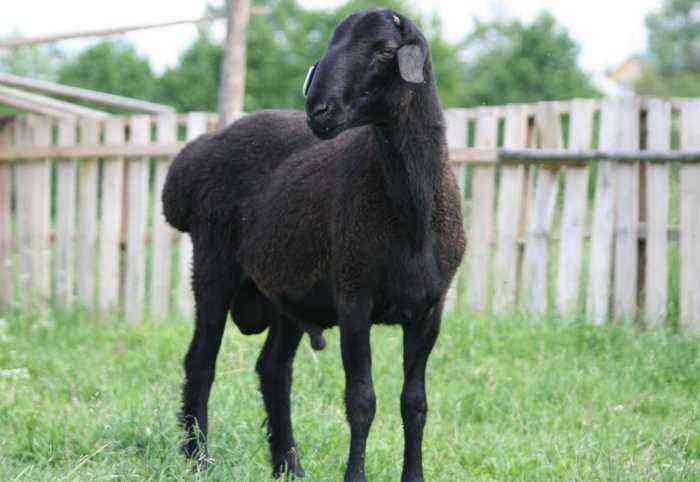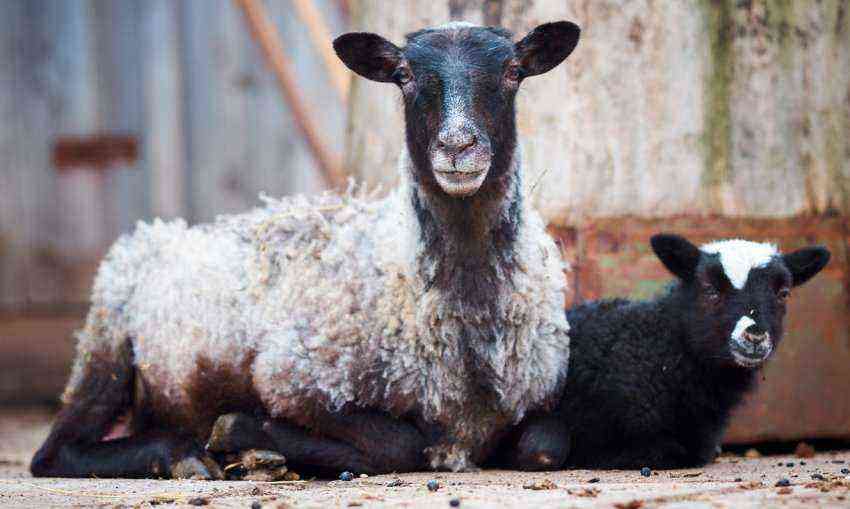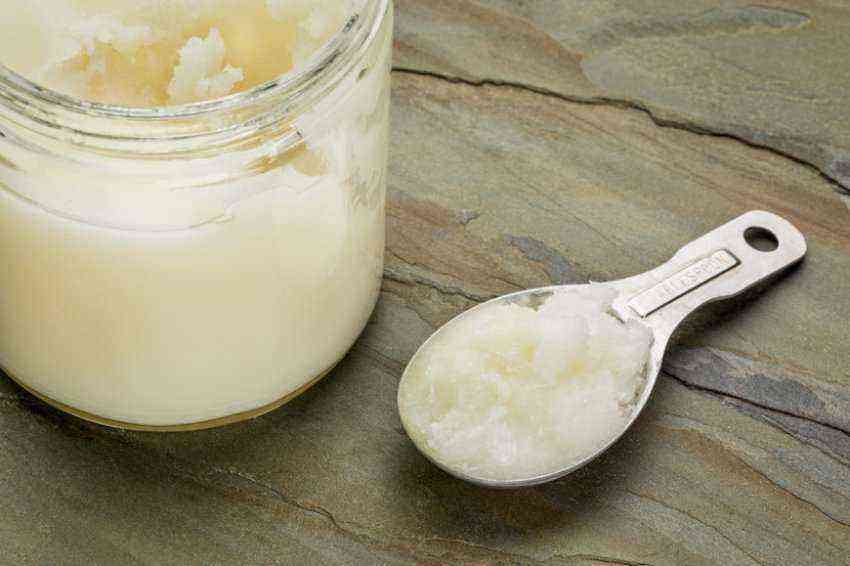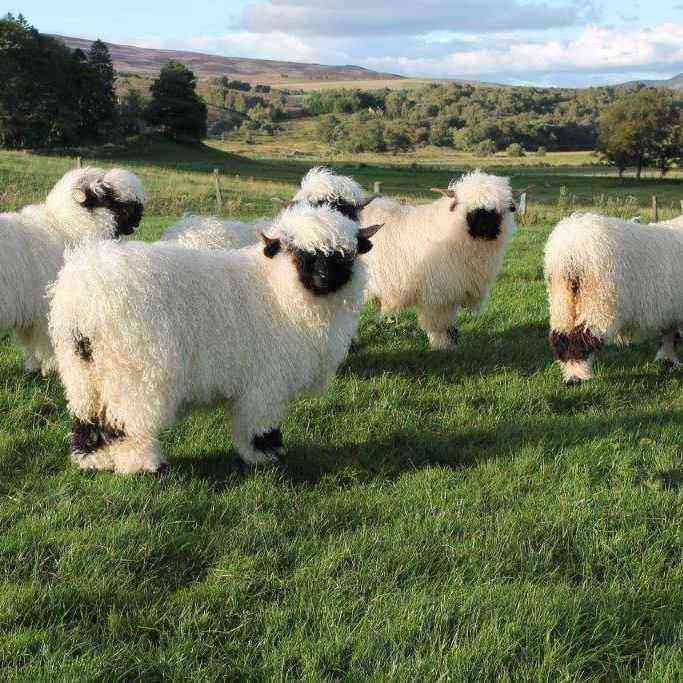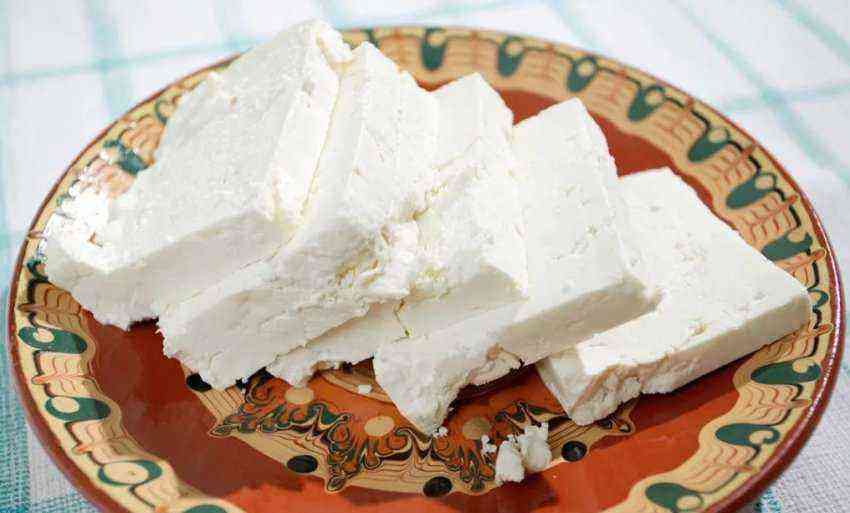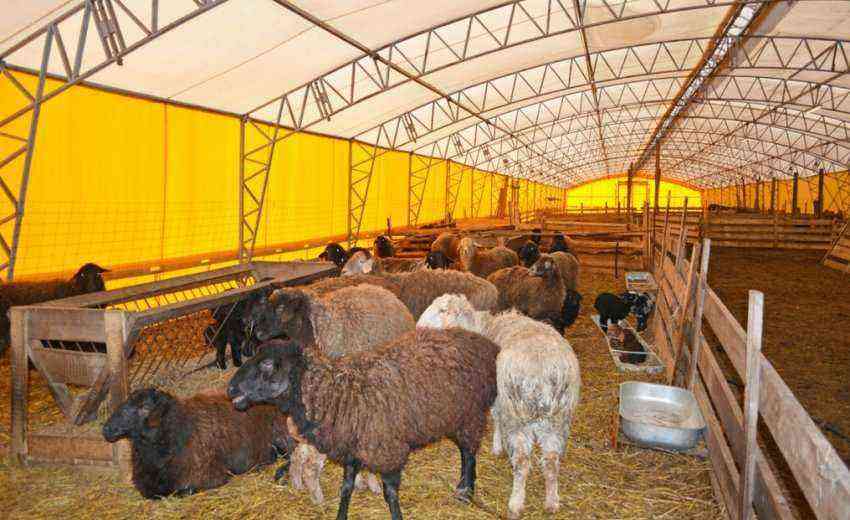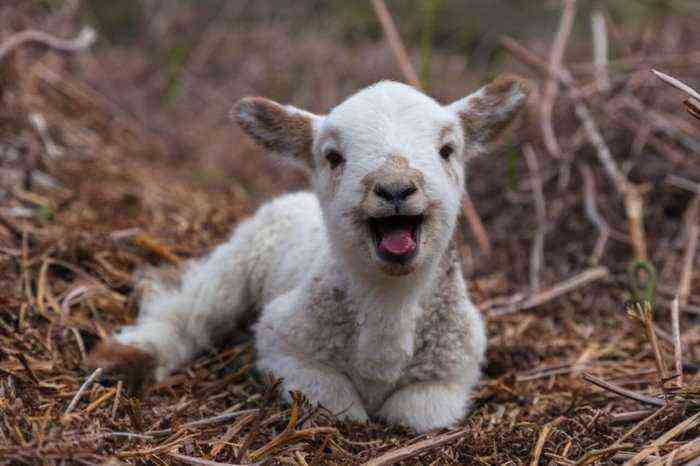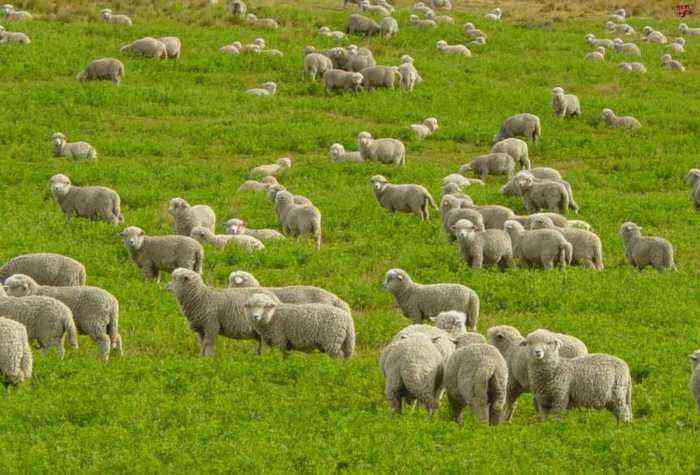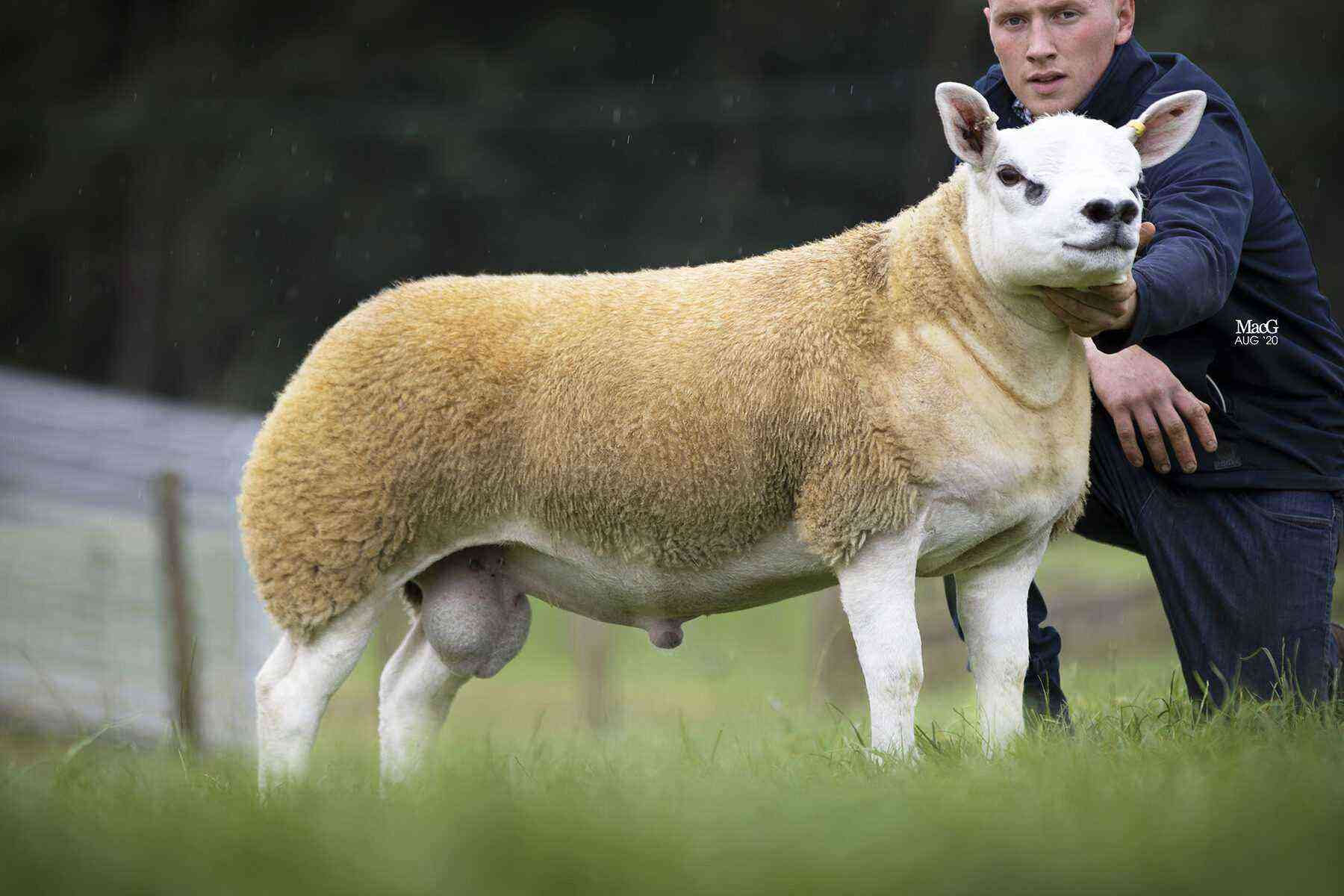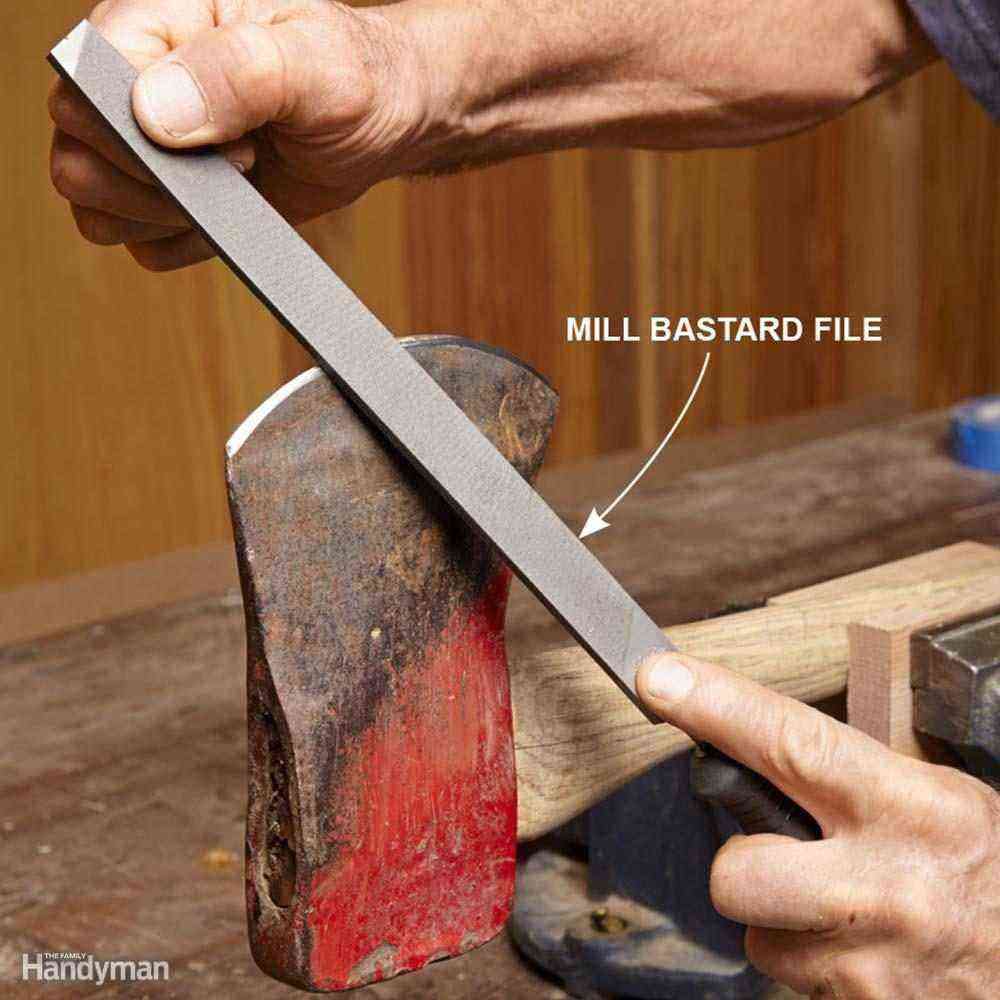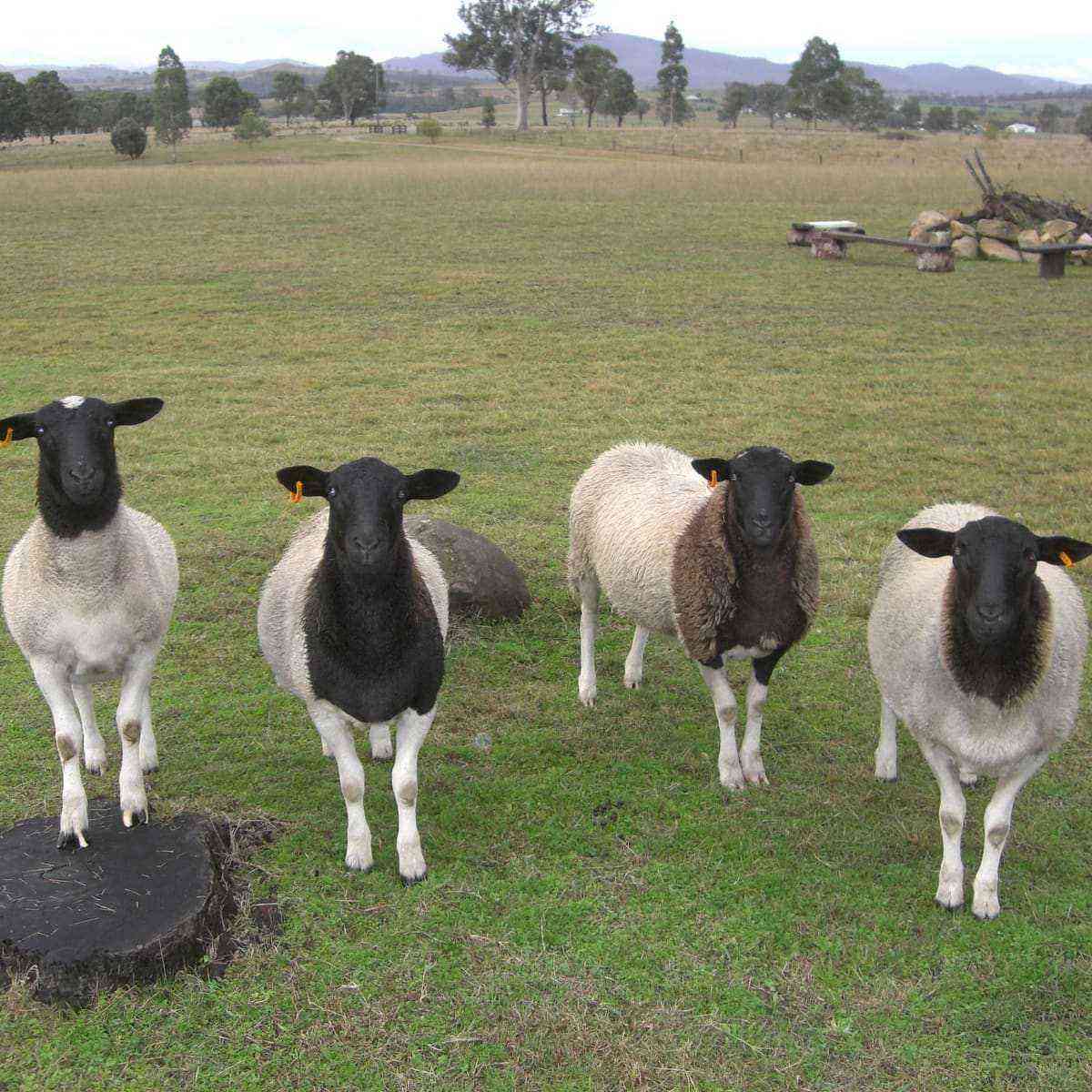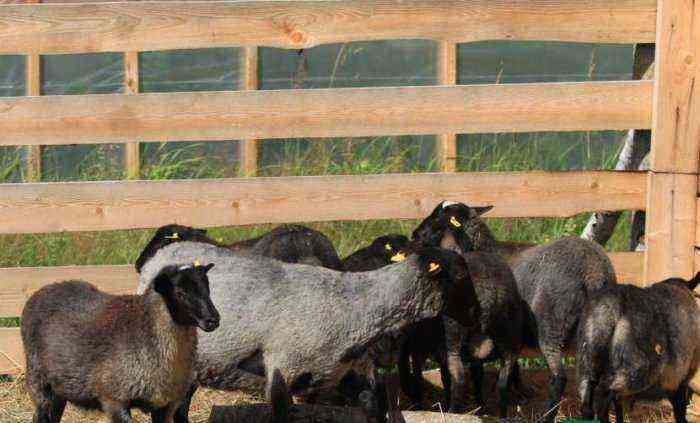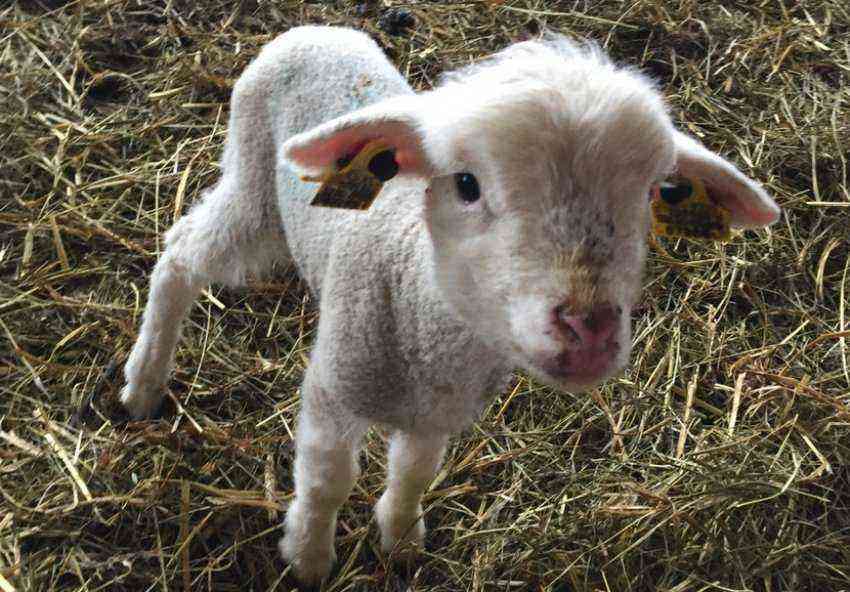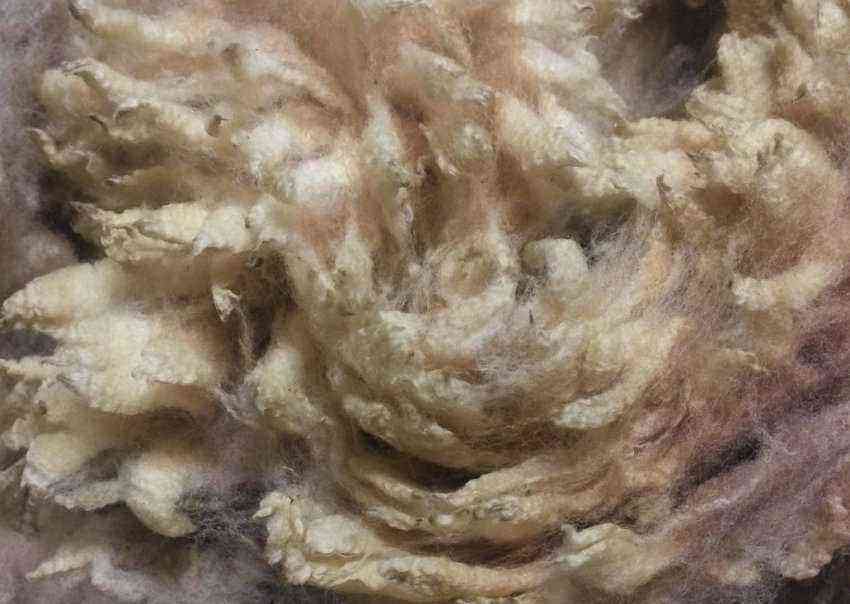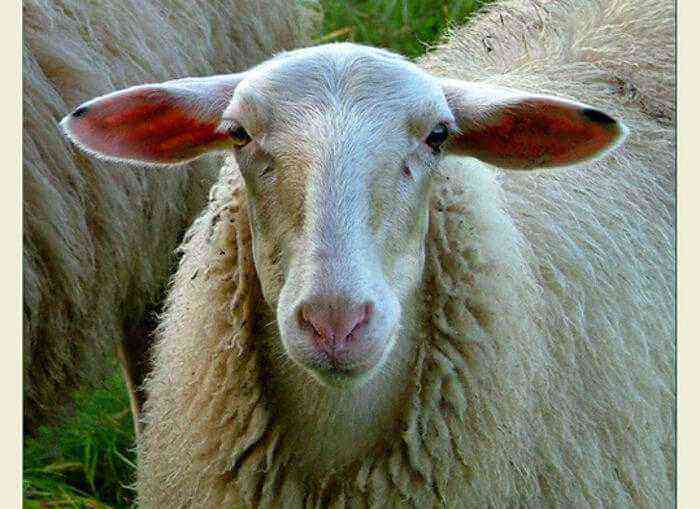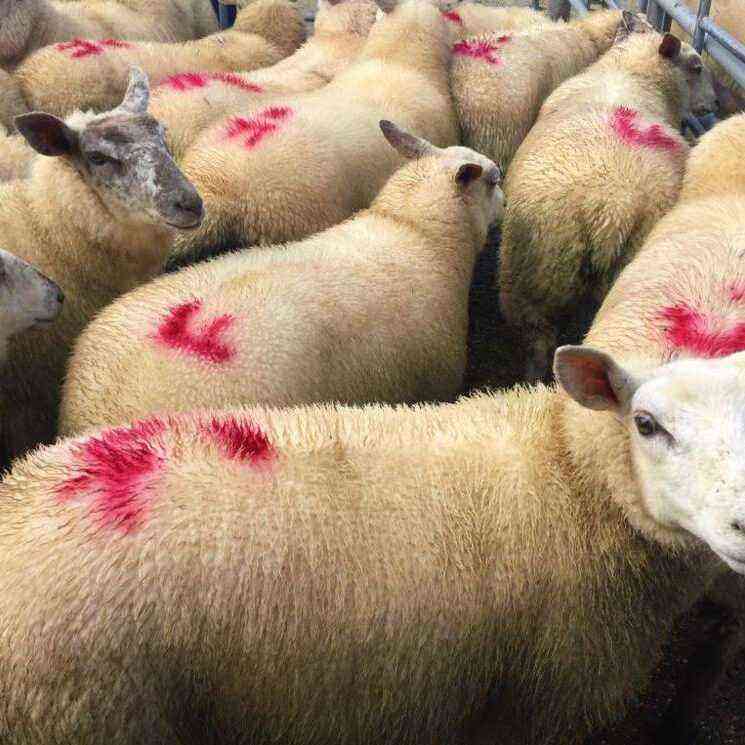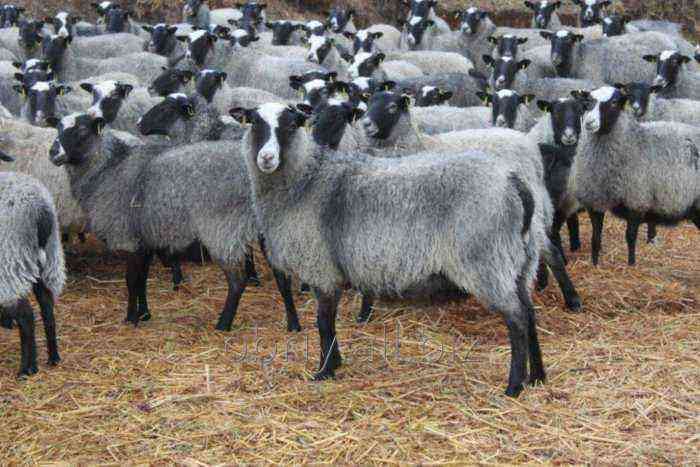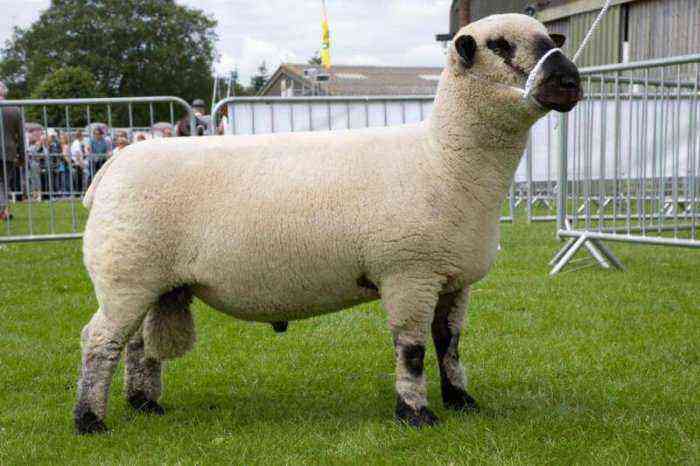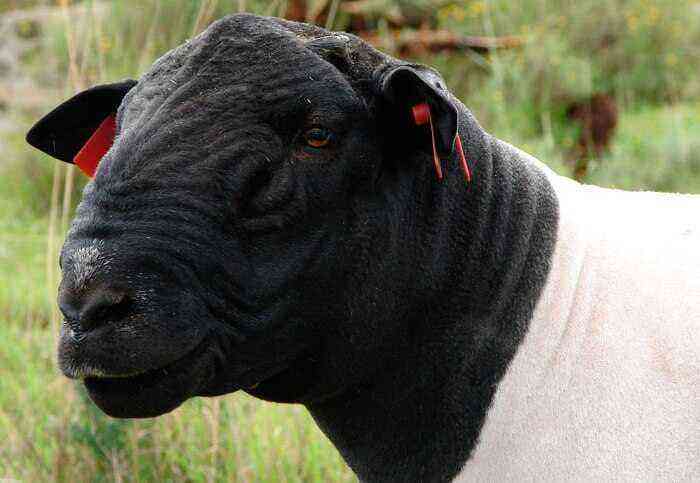Unprepared sheep’s wool has a sharp unpleasant odor, and between the strands contains a lot of debris and dust. Therefore, such raw materials require special cleaning and washing. Any mistakes made at this stage can spoil the material. How to wash and dry raw, what products are effective at home can be found in the article.
Washing sheep wool with powder
Raw does not like sudden changes in temperature, boiling water, aggressive detergents and unnecessary touches. Therefore, washing should be carried out with minimal hand contact with the material. Experienced housewives advise beginners not to experiment with washing powders, because, due to their chemical structure, they are poorly washed out of the fibers and can damage them, but to give preference to liquid products.
Did you know? The annual world production of wool is about 2 million tons. China is the leader in this market – 400 thousand tons of raw materials per year and Australia – 362 thousand tons.
Before washing, sheared sheep’s wool must be carefully sorted out, selecting large specks, and then combed out. It is better to do the procedure with a wooden comb for animal hair. Prepare a large laundry container in advance. Facilitate the process of cleaning wool mesh and colander.
These attributes will be needed when the rune is immersed in water, and will also be in demand in order to squeeze out excess moisture from the fibers without unnecessary touches. Care must be taken to protect the respiratory tract. The fact is that wet raw materials intensively emit a very unpleasant odor.
Did you know? The most expensive woolen socks are made from the wool of the vicuña, an artiodactyl animal that lives in the Andes. The cost of the product ranges from $ 1200 per pair.
Further manipulations with sheepskin are carried out strictly according to the instructions:
- Fill the container with cold water and immerse the fleece in it. Leave the raw material in the water overnight. Pre-soaking will make the next wash easier.
- In the morning, drain the dirty water and prepare hot water in a separate container. It is desirable that its temperature does not exceed + 70 ° C.
- Pour washing powder into another basin (you should choose special detergents for washing woolen products) and fill it with hot water. Wait until the grains are completely dissolved. The proportion of detergent is calculated in the ratio – 30 g per 10 liters of total water volume. Take care of a supply of powder solution, since washing sheepskin involves repeated changes of water.
- Pour the prepared soap foam into the filled container and mix thoroughly.
- Dip the woolen fleece in the soap solution. To keep it from falling off, you can dive by laying the wool on the net. At this stage, it is important to wash the accumulated lanolin from the fibers – a natural fat secreted from the animal’s skin. Its residues interfere with the formation of thread strands.
- It is strictly forbidden to wash off the fat with your fingers. This is done by dipping and raising the raw material in hot soapy water. Repeat the procedure for 20 minutes, changing the water.
- Leaving the sheepskin on the wire rack, fill the container with clean hot water (no detergent added) and rinse thoroughly. It is advisable to wash away soapy residues under the pressure of water from a hose.
- Then change the water and add wool detergent to it. Soak the sheepskin in the liquid for 2 hours. Be prepared to renew the solution every 30 minutes, as there is a lot of fat in sheep’s curls. In the case of rapid cooling of water, the procedure must be accelerated, because the cold environment inhibits the exfoliation of lanolin particles.
- Using a mesh, rinse the raw material in clean water. Repeat the procedure until the fibers are completely clean.
- At the final stage, it is recommended to treat woolen curls with a balm for the care of oily hair. This is done so that the fibers do not fall off, shine and are easy to comb. The product is gently applied by hand to the material and washed off after half an hour with a stream of non-hot water.
Video: How to wash sheep’s wool with powder
Shampoo washing
A small fleece can be cleaned of dust and dirt with a colander. After all, excessive touching of the fibers provokes the destruction of their structure. Therefore, it is strictly forbidden to squeeze and wash the raw material with your hands.
In the case of using shampoo, you need to act like this:
- Fill a basin with hot water and add shampoo to it. Variations are preferred for oily hair, as well as for bathing animals. Stir well until foam forms.
- Dip the combed and sorted wool into the foam solution, leave for 30 minutes.
- Drain the contents of the basin into a colander.
- Repeat the procedure 5-6 times.
- Soak the raw material in clean hot water and leave for 2 hours.
- Use a colander to drain the dirty water and rinse the wool.
- It is strictly forbidden to wring the fleece with your hands. Put it on the grid and let the water drain.
Important! When drying, sheep wool is laid out in a thin layer. Its thickness should not exceed 1,5 cm. Otherwise, the material will fall off.
Washing sheep wool with dish detergent
It is very convenient to wash raw sheep with dish detergents, as they do an excellent job with fat of any consistency. You can carry out the procedure in a basin or bath – it depends on the volume of raw materials.
Before starting work, you should select the remains of grass, spools and other large debris from the curls. Please note that in the process of washing from the material, a large runoff of sand and dirt is expected. Therefore, be sure to install a protective sieve (fine-meshed grate) in the drain points.
Important! Undyed washed wool is not subject to long-term storage. Therefore, you should not start washing it if you do not plan to paint it in the next 3 months.
When using dishwashing detergents, follow the instructions below:
- Wash off the dirt from the cleaned fibers – put the fleece in a basin and fill it with water at room temperature. After 15 minutes, gently drain the dirt and repeat the procedure 5-6 times.
- The next step is to degrease the fibers. The degree of cleaning depends on the type of needlework for which the wool is intended. For example, wet felting or dyeing does not require the complete elimination of lanolin. At this stage of washing, the skin is placed in warm water (temperature +30 … + 40 ° C), in which liquid detergent is first dissolved. You can add any oxygen bleach to the solution (this recommendation is relevant only for light strands). Wool is not touched by hands. The main thing is that the water completely covers the curls. In this state, they are left for 20-30 minutes, after which the procedure is repeated. The number of repetitions depends on the degree of degreasing desired.
- Finish washing with a rinse. With the described method, it is carried out with water at room temperature, changing it about 5-6 times. It is important that there are no soap residues on the fibers.
Video: My sheep’s wool
With salt without soap
This folk method cleans dirt from wool fibers well and preserves their color. Therefore, table salt is used both for white products and for colored ones. Before washing, the fleece must be cleaned.
Further actions are carried out according to the algorithm:
- Fill a basin with hot water and soak the material in it. After 20-30 minutes, drain the dirty water and use a colander to get rid of excess moisture.
- In a basin, prepare a saline solution (30 g of table salt per 1 liter of water).
- Dip raw sheep into it and leave for 1,5–2 hours. Then drain the dirty water and repeat the procedure 2-3 times.
- Rinse the coat with plenty of cold water.
Video: We wash, we sort, we scratch sheep’s wool with hand combs
Drying after washing
Washed wool should not be combed wet. It is important that the curls are completely dry. This takes several days. Improper drying is fraught with damage to the material. Therefore, wet sheepskin should be handled very carefully.
After washing, carefully place it on a wire rack to drain excess water. To speed up the result, you can place the wet raw on a terry towel and gently wring it out. Avoid friction and sudden movements – the coat does not like this.
Important! If you plan to divide the fleece into separate curls, then do not overdry it. Wet hair is more manageable than dry hair.
Such a spin should be repeated 2-3 times, periodically changing the towel. After the bulk of the moisture has “left” the fleece, you can shake it slightly and continue drying in a warm and well-ventilated place. Remember to control the drying process. Periodically turn the lamb curls over for even air circulation.
It is best to dry outside, away from direct sunlight. In the conditions of an apartment, many housewives advise drying the washed raw material by laying it on a terry towel, which is laid on a heating (electric) mattress or battery. When choosing these methods, consider the sensitivity of sheepskin to sudden temperature changes.
Combing after washing
The methods of combing sheep’s wool largely depend on its further purpose. For example, if you plan to make curls for dolls from curls, then combing the material after drying is not necessary. It is enough to form neat strands from them.
For other purposes, the wool is carefully combed out, as a result of which it is very fluffy. It is better to do this with wooden combs or combs intended for animals. 
Washing sheep’s fleece is significantly different from cleaning woolen products.. The fact is that the finished product has already undergone a certain processing, which makes it much easier to achieve its purity. It is very difficult to wash raw. The work is dirty and requires patience. By following the above recommendations, you will achieve the desired result.
